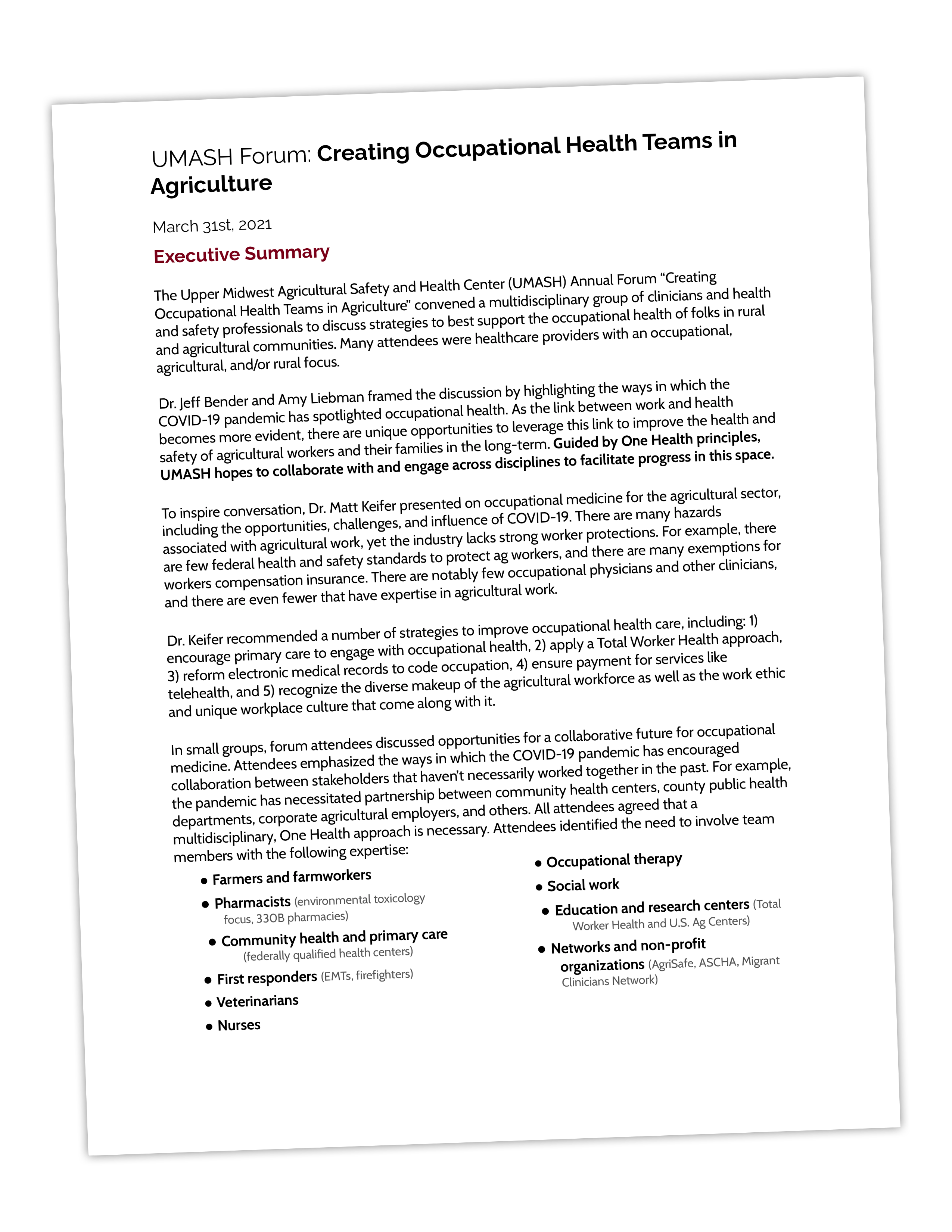Creating Occupational Health Teams in Agriculture
March 31st, 2021
 Farmers and agricultural workers are at very high risk for fatal and nonfatal injuries; and agriculture is one of the few industries in which family members (who often share the work and live on the premises) are also at risk.
Farmers and agricultural workers are at very high risk for fatal and nonfatal injuries; and agriculture is one of the few industries in which family members (who often share the work and live on the premises) are also at risk.
According to the National Institute of Occupational Health, agriculture ranks among the most hazardous industries. Hazards on the farm are diverse and varied depending on the operation, from machinery and large animals, to weather extremes, to exposures to chemicals and infectious diseases.
Yet rural clinicians are often unprepared to recognize and manage injuries, exposure and illnesses that result from work in agriculture. How do we address the occupational injuries associated with agriculture? Who are the healthcare professionals involved with treating these specific injuries? Are there gaps in training and coordination? What can be done to prevent farm related injuries and exposures?
2021’s 90-minute forum brought together healthcare practitioners across the spectrum to consider a multi-disciplinary approach between occupational health/medicine in rural communities. Dr. Jeff Bender and Amy Liebman framed the discussion by highlighting the ways in which the COVID-19 pandemic has spotlighted occupational health. To inspire conversation, Dr. Matt Keifer presented on occupational medicine for the agricultural sector, including the opportunities, challenges, and influence of COVID-19.
He recommended a number of strategies to improve occupational health care, including:
- Encourage primary care to engage with occupational health Apply a Total Worker Health approach
- Reform electronic medical records to code occupation
- Ensure payment for services like telehealth
- Recognize the diverse makeup of the agricultural workforce as well as the work ethic and unique workplace culture that come along with it.
Small group discussions followed as a means to brainstorm and strategize. All attendees agreed that a multidisciplinary, One Health approach is necessary.
Discussion centered on the tools and models already available to address the challenges in occupational health care, such as:
- Occupation classification in Electronic Health Records and other surveillance
- Foster occupational health expertise in rural, primary care settings with models such as Project ECHO that successfully equipped local primary care providers in New Mexico with expertise about hepatitis C
- Build on existing partnerships with key stakeholders (i.e. AgriSafe, RF-DASH, MCN, UMASH Immigrant Dairy Worker Collaboration, and more)
Assessments of occupational health exposure and history in addition to other important medical history, including:
- The Medical University of South Carolina Agromedicine Program developed the WHACS model for Family Practice
- Simple occupational screenings (i.e. utilized by Migrant Clinicians Network and collaborating federally qualified health centers)
- AgriSafe Total Farmer Health model has a health risk assessment tool for assessing agriculture-specific exposures, symptoms, and mental health, as well as a course for providers
One important tool highlighted was telehealth and virtual education. Ideas included:
- Increasing use of technology on farms
- Allowing the option for audio only virtual health
- Implementing a model with an initial in-person visit and telehealth follow up
In terms of provider education and training, attendees discussed the importance of incentivizing education through:
- Ensuring reimbursement for occupational healthcare (telehealth or in-person),
- Offering CME/CEUs
- Making clear the practical value of occupational health knowledge and skills.
- In primary care settings, it may be important to expand the focus from acute care to emphasize community-based and preventative care.
Further, it may be important to demystify agricultural work for providers by equipping them with information about its specific hazards and unique culture.
In rural and agricultural areas, there can be significant barriers to healthcare/health, including access issues, financial burden, and even fear due to immigration status. Farm families are diligent for healthcare like baby wellness checks, but otherwise, farmers can be stoic, delaying care or only seeking care in an emergency.
Ultimately, being successful in this work would mean that rural healthcare systems are efficient and ready to respond to occupational needs in a culturally-appropriate manner. With success, care would not be a burden for farmworkers and their families, and agricultural communities would have better mental and physical health. We hope that the ideas and questions raised at this forum appropriately set the stage for meaningful next steps in this work.

